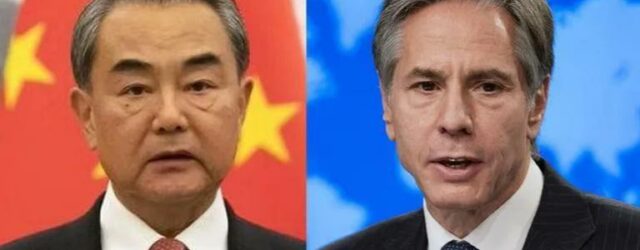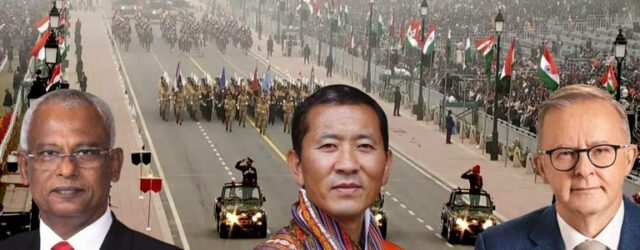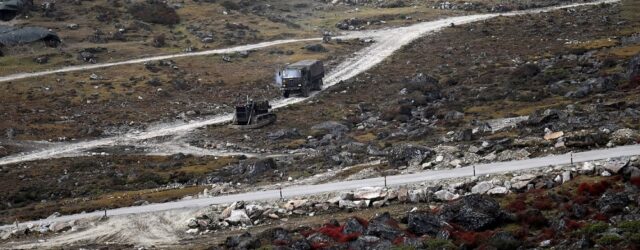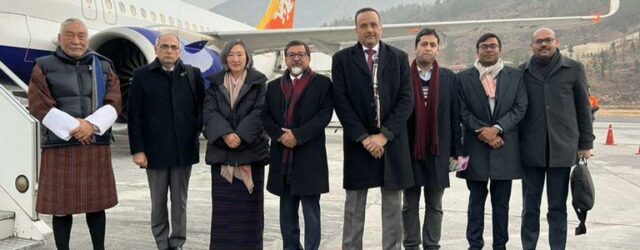On the same day Aung San Suu Kyi was sentenced, one of Myanmar’s most prominent Christian leaders, Hkalam Samson , faced charges of unlawful association that could lead to at least three years in jail. Hkalam Samson, former president of the Kachin Baptist Convention and now chair of the Kachin National Consultative Assembly, was arrested at Mandalay International Airport on Dec. 5, 2022, as he attempted to leave for Bangkok. He is reportedly being held in Myitkyina prison, where he is denied family visits, and there are concerns about his health, as he suffers from high blood pressure and bronchitis.
Aung San Suu Kyi and her party, the National League for Democracy, won an overwhelming victory in November 2020 elections and were poised to begin a second term of government. Under Myanmar’s military-drafted constitution, the military controlled key ministries in government—notably home affairs, border affairs, and defense—in a power-sharing arrangement with the civilian-led government. But by February 2021, commander in chief Min Aung Hlaing decided he had enough of the power-sharing agreement that began in 2015 and wanted the top job for himself.
Myanmar’s military dictatorship brought 2022 to an end in just as inhumane and brutal a manner as it had attempted to rule the country throughout the year: by sentencing democracy leader and former de facto head of government Aung San Suu Kyi to another seven years in prison on sham charges of corruption, taking her total sentence to 33 years. The 77-year-old Nobel laureate, who has been jailed over the past 18 months on 19 false charges, faces the prospect of spending the rest of her life behind bars.
Myanmar’s military dictatorship brought 2022 to an end in just as inhumane and brutal a manner as it had attempted to rule the country throughout the year: by sentencing democracy leader and former de facto head of government Aung San Suu Kyi to another seven years in prison on sham charges of corruption, taking her total sentence to 33 years. The 77-year-old Nobel laureate, who has been jailed over the past 18 months on 19 false charges, faces the prospect of spending the rest of her life behind bars.
Aung San Suu Kyi and her party, the National League for Democracy, won an overwhelming victory in November 2020 elections and were poised to begin a second term of government. Under Myanmar’s military-drafted constitution, the military controlled key ministries in government—notably home affairs, border affairs, and defense—in a power-sharing arrangement with the civilian-led government. But by February 2021, commander in chief Min Aung Hlaing decided he had enough of the power-sharing agreement that began in 2015 and wanted the top job for himself.
On the same day Aung San Suu Kyi was sentenced, one of Myanmar’s most prominent Christian leaders, Hkalam Samson, faced charges of unlawful association that could lead to at least three years in jail. Hkalam Samson, former president of the Kachin Baptist Convention and now chair of the Kachin National Consultative Assembly, was arrested at Mandalay International Airport on Dec. 5, 2022, as he attempted to leave for Bangkok. He is reportedly being held in Myitkyina prison, where he is denied family visits, and there are concerns about his health, as he suffers from high blood pressure and bronchitis.
The regime has a history of targeting or attempting to use religious groups, which play a very prominent role in Myanmar’s civil society. Although the vast majority of the overall population is Buddhist and Buddhist monks and laypeople play a visible role in society, Christians are a majority among the Kachin and Chin ethnic groups as well as a significant proportion of the Karen and Karenni, and they serve in key leadership positions within the resistance. Throughout Myanmar, monasteries, pagodas, mosques, and churches are vital centers of community activism and humanitarian support.
Jailing Aung San Suu Kyi for 33 years is a vindictive act designed solely to ensure, at all costs, that she will never again enter the political or public arena unless the regime falls. The brutal treatment of a Nobel Peace Prize winner shows that the military cares nothing for its international reputation. The arrest of Hkalam Samson, whom I know personally, is a similar rebuff to world opinion.
Although not possessing the same global profile as Aung San Suu Kyi, Hkalam Samson is nevertheless an internationally respected religious leader. He has been an outspoken advocate for human rights and peace for the Kachin people and recognized for his activism on the global stage. His arrest and detention are profoundly concerning. The United States, United Kingdom, European Union, Canada, and other governments—together with parliamentarians, human rights groups, and religious leaders around the world—must speak out for him urgently and call for his release.
But clearly, calls alone are not enough. The junta has shown that is does not respond to persuasion. In his September 2022 report, former U.S. Rep. Thomas Andrews, the United Nations special rapporteur for human rights in Myanmar, said the country’s crisis was spiraling from “bad to worse to horrific.” He accused Myanmar’s military of committing crimes against humanity and war crimes. The Biden administration has already recognized atrocities against the predominantly Muslim Rohingya as genocide. According to Andrews, 1.3 million people have been displaced, 28,000 homes have been destroyed, and more than 13,000 children have been killed.
Throughout last year, the junta continued its crackdown with extraordinary intensity. At least four pro-democracy leaders, including a former parliamentarian, were executed while another 10 leaders—including seven university students—were sentenced to death. The military torched the home village of the country’s first ever Catholic cardinal, Charles Maung Bo, possibly as a deliberate warning to Charles Maung Bo, who is an outspoken activist, and killing seven civilians, including a 9-year-old boy. Dozens of airstrikes have hit villages across the country, around 13,000 political prisoners languish in jail, and thousands of people have been killed or driven from their homes.
Yet this crisis hardly registers on the international agenda. Not until Dec. 21, 2022—less than two weeks ago—did the United Nations Security Council pass a resolution on Myanmar, the first in 74 years, despite it being almost two years since the coup and decades of atrocities by the military. The resolution simply calls for an end to violence in the country and the release of political prisoners, including Aung San Suu Kyi. It expresses “deep concern” at the continuing state of emergency imposed by the military and its “grave impact” on civilians. And it called for “concrete and immediate actions” to implement a peace plan and to “uphold democratic institutions and processes and to pursue constructive dialogue and reconciliation.” Even then, while 12 member states voted in favor, Russia, China, and India abstained.
Only last month, the U.S. Congress passed significant legislation—the so-called Burma Act—as part of the National Defense Authorization Act, and U.S. President Joe Biden has signed it into law. This imposes further sanctions on Myanmar’s military regime and designates $50 million per year over five years for support for Myanmar’s democracy movement as well as $220 million in humanitarian aid for 2023.
The U.N. Security Council resolution and the Burma Act are very welcome but long overdue. And although the U.S. legislation includes some very significant concrete measures, the U.N.’s resolution is only meaningful if it translates into action by member states. As Andrews said: “The people of Myanmar are deeply disappointed … by those nations that voice support for them but then fail to back up their words with action. The stakes could not be higher.”
There are three immediate, practical steps to take.
First, sanction supplies of aviation fuel to Myanmar. According to Amnesty International, Puma Energy, ExxonMobil, Thai Oil, PetroChina and Rosneft are the major sources of aviation fuel to Myanmar’s military. Between March 2021 and August 2022, there were 16 air attacks against civilians in villages in Myanmar’s ethnic regions. These strikes destroyed homes, religious buildings, hospitals, schools, and a camp for displaced people as well as injured countless people and killed at least 15 civilians. And these are only the strikes Amnesty International documented. If as many countries as possible sanction aviation fuel to Myanmar, then it would help impede the military’s ability to bomb its people—at least for a while.
Second, sanction the two regimes that keep Myanmar’s illegal junta alive: President Vladimir Putin’s Russia and President Xi Jinping’s China, which supply the military with arms, finance, and diplomatic cover. Their regimes should be sanctioned for complicity in Myanmar’s atrocity crimes. A global arms embargo should be coordinated and enforced, and targeted sanctions should be imposed against Russian arms providers and Chinese companies investing in Myanmar, particularly in the lucrative mining, oil, and gas sectors
Third, provide humanitarian aid to Myanmar’s internally displaced people and refugees on its borders with neighboring countries. This can be done through local Burmese civil society groups that have experience working with international donors and delivering cross-border aid as well as through coalitions of well-established international aid agencies, such as the Border Consortium working along the Thailand-Myanmar border. The United States, United Kingdom, Canada, Australia, and the European Union should step up their efforts to coordinate a humanitarian response.
In short, cut the lifeline to the regime and provide a lifeline to the people.
The world faces many crises, and there is a struggle for headlines. But while Myanmar’s tragedy may be forgotten, it needs action. Myanmar is Asia’s Ukraine—a human rights and humanitarian catastrophe, with civilian casualties targeted by an aggressor’s bombs—except the aggressor is not a foreign invader but an illegal regime that overthrew a democratically elected civilian government. This cannot be allowed to stand.










